mdsoares
TPF Noob!
- Joined
- Aug 21, 2008
- Messages
- 33
- Reaction score
- 0
- Location
- Buffalo, NY USA
- Can others edit my Photos
- Photos NOT OK to edit
So you probably clicked on this thread thinking, "WTF? Someone is taking these cheap POS super tele lenses seriously?" That's right! I am.
The reason for this review is to determine if some of these super budget, super telephoto lens are even worth the metal they're cast out of. Let's face it, this is a very expensive hobby (I also maintain a saltwater fish tank. The Fish are a bargain compared to photography), and there are alot of casual hobbists out there, just longing for a budget lens with that little extra reach they need. That may be for catching their son or daughter playing outfield in little league, or going down to the waterfront to take leisurely pictures of sailboats. For many of these weekend hobbyists, buying a $1000 lens to get that reach simply isn't an option now, or ever. They simply cannot justify spending that kind of money on glass that they will use very sparsely.
So the question is, what about the budget super telephotos out there? We're all familiar with them as eBay is awash with them new or used for too good to be true prices from manufacturers like ProOptics, Opteka, Samyang, and Quantaray. As such, they've developed a reputation for being worthless, low quality, and unable to produce useful images. While this may be true for the pro or semi pro photographer, the casual hobbyist isn't nearly as demanding. Consequently, that is who these lenses are marketed toward. Let's face it, most DSLR casual hobbyists are rarely going to create prints any larger than the occasional 8x10. They simply want usable images that they can send to their family, post online, or print on 4x6s. Does the ProOptics 420mm-800mm Super TeleZoom allow that?
Now that we have the "why would you waste your time on this?" segment out of the way, it's time to take a look at the lens itself, and see how it performs. I'm going to look at the build quality and design of the lens, and then review it's real world performance. I'll give my take, but I will post sample pictures. So you can be the judge.

Manufacturer: ProOptics
Focal Length: 420mm -800mm
Aperture: variable from f8.3
Focus: No AF - Manual Ring only
Testing Camera: Sony A-200
ISO: ISO400
First Impressions / Build Quality
When I first opened the box, the first thing I noticed was that this lens will not win any awards for aesthetics. It is jet black steel full of right angles. The main barrel is smooth and straight. It's obvious the designers were not concerned with building a product with great shelf appeal. As for the quality, the entire lens is steel with the exception of the rubber grips imbedded in the focusing and aperture rings. It does NOT feel like a cheap lens in hand. I was expecting alot more plastic or low quality metal for the price.
Function/Design
In making this lens affordable, the designers decided to leave out some major components that DSLR users these days would consider essential. Namely, like all the other budget super telezooms on the market, this is a T-mount lens, meaning no Autofocus. This lens does not communicate with the camera body at all. Luckily for me, my Sony A200's metering system works through the lens just fine and I was able to take perfectly the "old fashioned" way using the camera's exposure meter. Ideally, if you are dealing with a manual focus only lens, you'd expect the focusing mechanism to be easy. This lens succeeds in one area, and fails in another. The focusing ring is very smooth and finding focus was not difficult. The failure is the design of the focusing ring, in that the ring has to travel over 360 degrees to cover the entire focusing scale. SO while honing in on the correct focus is relatively easy, getting there is much too slow. To go from one end of the focusing spectrum to the other the ring twists around 1 1/2 full rotations. Especially when the ring is rather far from the camera body, this makes focusing a rather slow endeavor.
While this lens is marketing as a Supertelephoto Zoom, it is not a true zoom. It is more of a variable focal length lens than a zoom. To change focal lengths you must loosen the zoom lock ring and then pull the barrel forward to zoom in, or pull back to zoom out. Thus it is a Push/Pull Zoom, and not the true twist zoom we're all used to. The barrel for the zoom has the focal lengths of 420mm, 600mm, and 800mm marked, so you know where to pull the barrel out to. However if you want 500mm for example, you're left to guess where it should be.
There is also an aperture ring between the focus ring and the zoom lock. The aperture can be adjusted from f8.3 to f11 at 420mm, meaning you need a sunny day or a high ISO to shoot. This is not a fixed aperture lens, so by the time you zoom in to 800mm, your aperture range has gone from the widest of f8.3 to a widest of f16. If you want to use the full power of this lens, you need to crank up the ISO a bit, have a very stable tripod, or a clean sunny day. The ring travels rather smoothly and adjusted the aperture in real time, which makes the metering of your camera body usable. Dial in the aperture you want on the lens and most bodies will meter for you at that aperture.
Testing
I took some test shots on a mostly Sunny day at about 12 noon. All shots were taken ISO400 with my Sony A200 in full manual mode. To test the lens I used a satellite dish about 150-200 yards away from my house as a test subject.
420mm f8.3 ISO400 1/500
--My first impressions with this photo was...wow...that's actually quite usable. The focus was good though not great, and there didn't seem to be a whole lot of distortion. A shot like this could most definately be used in 4x6 prints or online. Lets take a closer look fully cropped however.
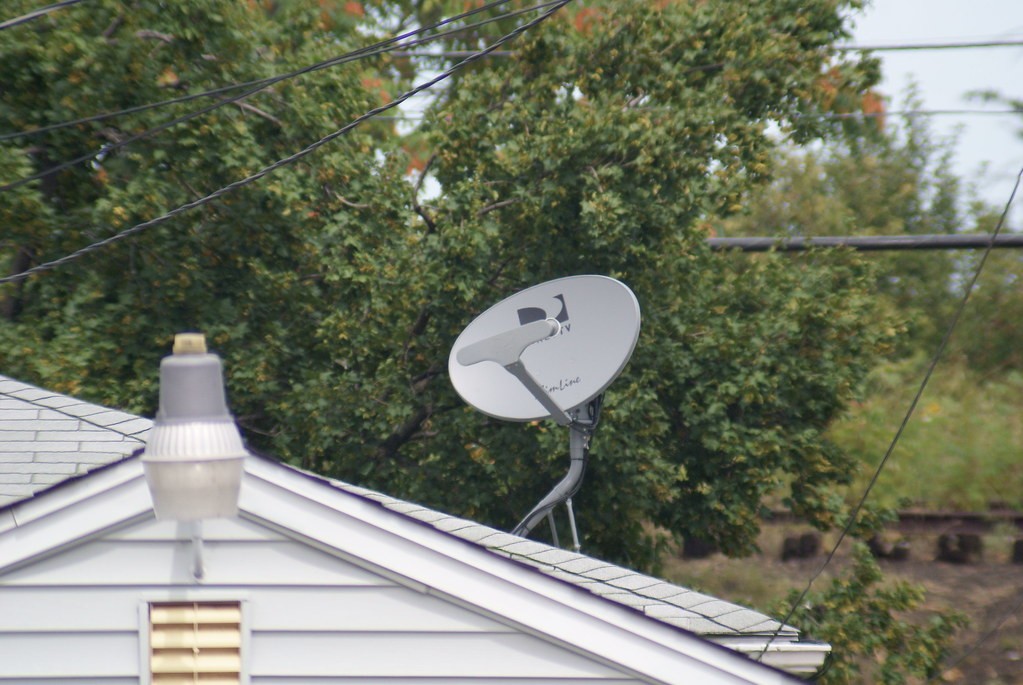
Here is that same image at 100% fully cropped so we can see the REAL quality of the image. Any image can look ok zoomed out at 33% of it's original size. There is a bit of noise fully cropped, though that may be due to the ISO of 400. There is a hint of some blue chromatic aberration on the top right side of the dish where it contrasts with the dark green background. Focus is a bit soft, though not horrible. Overall I'm impressed given the preconcieved notions regarding these type of lenses
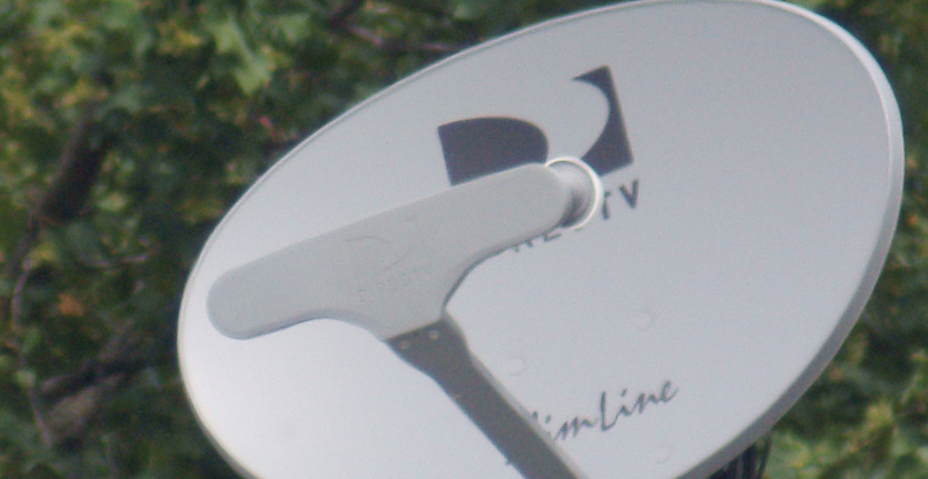
Next let's dial this puppy in all the way. I have a good lens already that does up to 300mm so I would just crop images from that lens rather than pulling out this ProOptics to use the 420mm focal length. The real test to me, will be the 800mm images.
Looking at the following image at 800mm and f16...color me impressed. If I can consistently get shots at 800mm like this with a lens that routinely goes brand new for $100...I will be very happy. Definately some noticible crom abberration at the top of the roof. However if you have photoshop that can be fixed up. So at 800mm the lens is producing images most definately sutable for 4x6 prints and online postings.
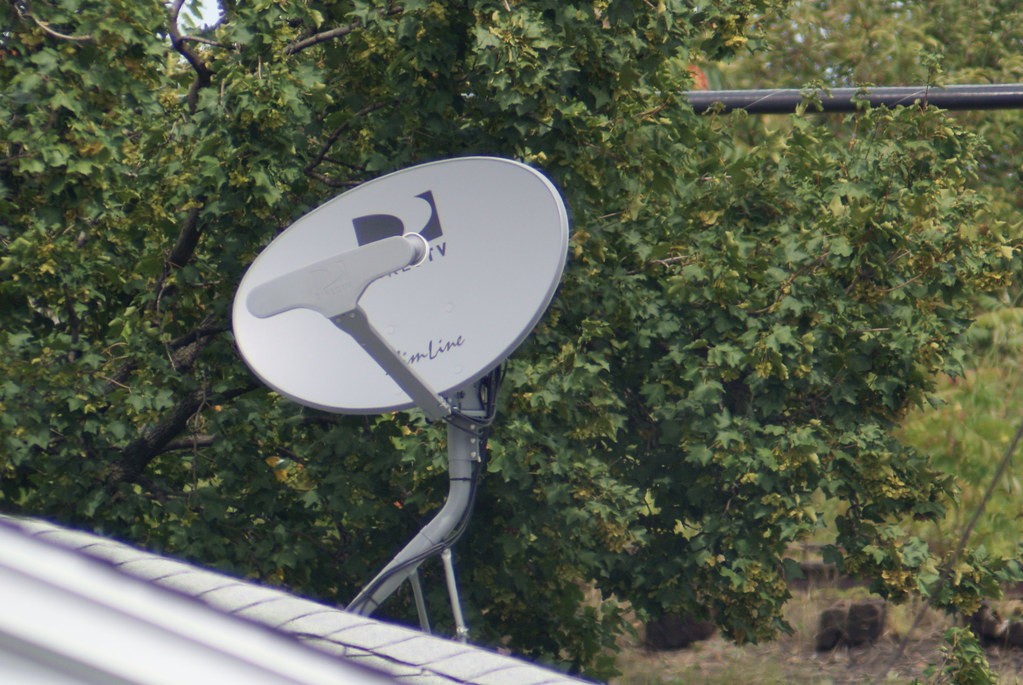
Of course lets see what this image is REALLY made of and take a look at it at 100% cropped.
Fully cropped to 100% the image seems to deal with some noise and crom abberation issues. The noise can easily be fixed with some basic editing, and the crom abberation should be able to be taken care of as well. This is no $1000 lens...but i'm quite impressed for the $$ spent. I expected much much worse.
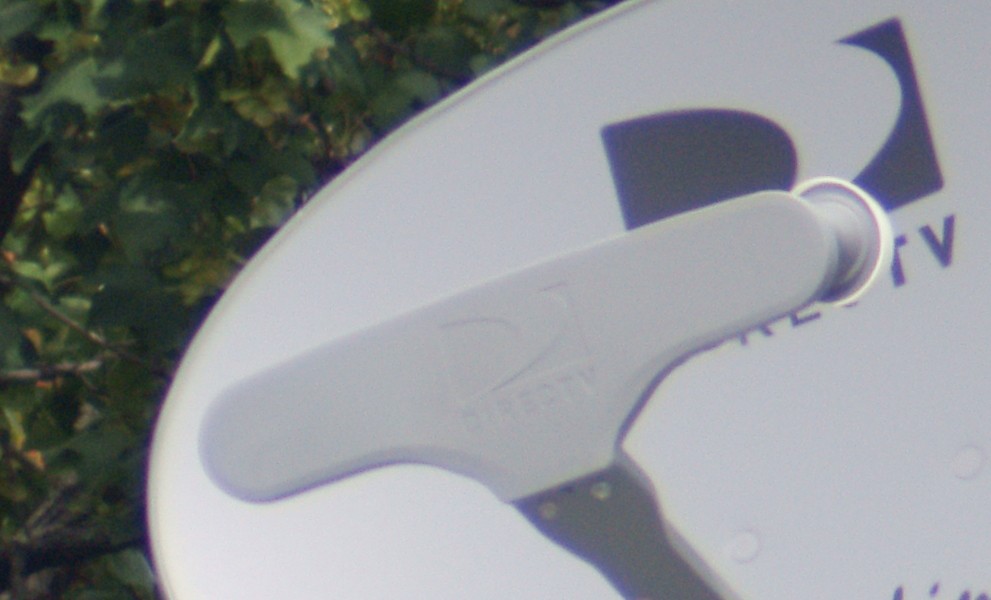
And lastly, here is a photo with a kit lens at 18mm to show the scale and zoom of the previous photos.
The dish used as the subject is directly across the street above the garage with the yellow door, on the next block.
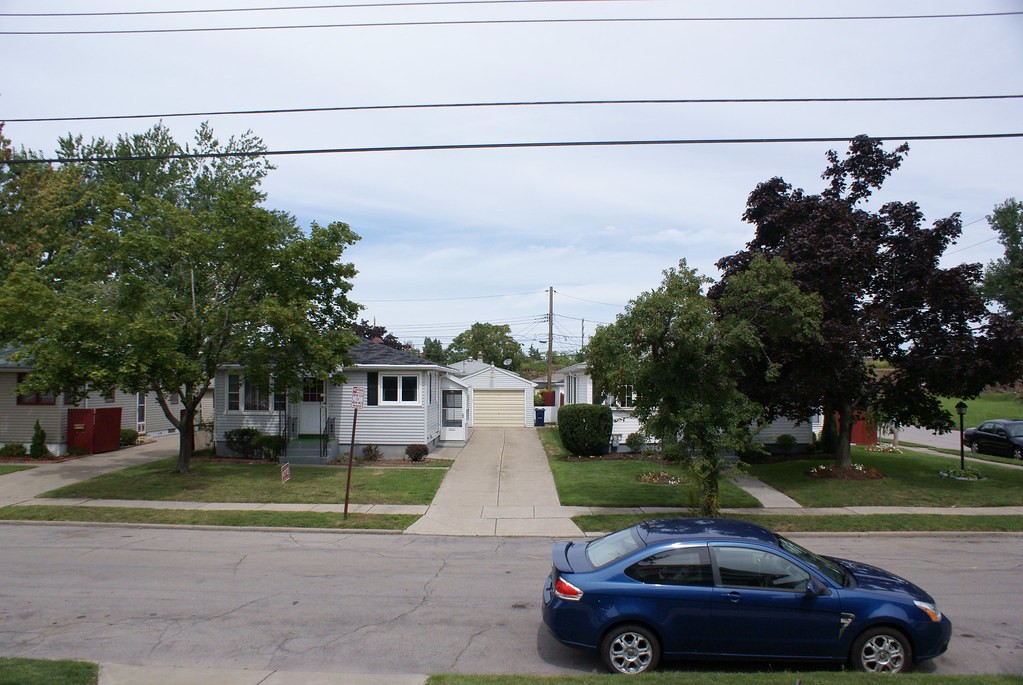
Conclusion
I think after viewing those images you'll agree that the results are not half bad for a lens with such a poor reputation. This near idential design can be found with the names of Quantaray, Phoenix, Opteka, and Samyang on it, so it's not some high end design, which makes the results pretty impressive.
I do however, stop short of reccommending it for people looking for a super telephoto for bird photography or action sports. You will have trouble if you take this lens to a hockey game and expect to get good shots. The manual focus is just too slow for most fast action. However if you're happy taking picture of players on the bench, or hanging out at warmups, or a slow game like baseball, you can probably get usable shots out of this lens. I'd venture to say that if you know your basics you can squeeze decent 8x10's out of this sucker without too much problem.
For the casual photographer looking for something to take photos of his kid at a baseball game, or to take to the zoo to get some super closeups, this lens will produce respectable 4x6 prints without a problem and will be fine for posting your photos online for family and friends to see. Do not expect to get a job for Sports Illustrated with this lens however. You'll be sorely disappointed if that is your goal.
Overall Ratings
Build Quality / Design - 6/10 (build is good, but design flaws make focusing too slow)
Performance - 6/10 (does well enough for most casual shooters to get usable shots)
Value - 8/10 (can't beat the price for a servicable super tele)
Overall - 6/10 (not an average. I Have to take the insanely low price into account. This lens produces usable decent results for an amazing price. While it does not deserve a spot in the professional or prosumer's kit bag. It can be a useful tool in the hands of a casual shooter who needs that extra reach.)
The reason for this review is to determine if some of these super budget, super telephoto lens are even worth the metal they're cast out of. Let's face it, this is a very expensive hobby (I also maintain a saltwater fish tank. The Fish are a bargain compared to photography), and there are alot of casual hobbists out there, just longing for a budget lens with that little extra reach they need. That may be for catching their son or daughter playing outfield in little league, or going down to the waterfront to take leisurely pictures of sailboats. For many of these weekend hobbyists, buying a $1000 lens to get that reach simply isn't an option now, or ever. They simply cannot justify spending that kind of money on glass that they will use very sparsely.
So the question is, what about the budget super telephotos out there? We're all familiar with them as eBay is awash with them new or used for too good to be true prices from manufacturers like ProOptics, Opteka, Samyang, and Quantaray. As such, they've developed a reputation for being worthless, low quality, and unable to produce useful images. While this may be true for the pro or semi pro photographer, the casual hobbyist isn't nearly as demanding. Consequently, that is who these lenses are marketed toward. Let's face it, most DSLR casual hobbyists are rarely going to create prints any larger than the occasional 8x10. They simply want usable images that they can send to their family, post online, or print on 4x6s. Does the ProOptics 420mm-800mm Super TeleZoom allow that?
Now that we have the "why would you waste your time on this?" segment out of the way, it's time to take a look at the lens itself, and see how it performs. I'm going to look at the build quality and design of the lens, and then review it's real world performance. I'll give my take, but I will post sample pictures. So you can be the judge.

Manufacturer: ProOptics
Focal Length: 420mm -800mm
Aperture: variable from f8.3
Focus: No AF - Manual Ring only
Testing Camera: Sony A-200
ISO: ISO400
First Impressions / Build Quality
When I first opened the box, the first thing I noticed was that this lens will not win any awards for aesthetics. It is jet black steel full of right angles. The main barrel is smooth and straight. It's obvious the designers were not concerned with building a product with great shelf appeal. As for the quality, the entire lens is steel with the exception of the rubber grips imbedded in the focusing and aperture rings. It does NOT feel like a cheap lens in hand. I was expecting alot more plastic or low quality metal for the price.
Function/Design
In making this lens affordable, the designers decided to leave out some major components that DSLR users these days would consider essential. Namely, like all the other budget super telezooms on the market, this is a T-mount lens, meaning no Autofocus. This lens does not communicate with the camera body at all. Luckily for me, my Sony A200's metering system works through the lens just fine and I was able to take perfectly the "old fashioned" way using the camera's exposure meter. Ideally, if you are dealing with a manual focus only lens, you'd expect the focusing mechanism to be easy. This lens succeeds in one area, and fails in another. The focusing ring is very smooth and finding focus was not difficult. The failure is the design of the focusing ring, in that the ring has to travel over 360 degrees to cover the entire focusing scale. SO while honing in on the correct focus is relatively easy, getting there is much too slow. To go from one end of the focusing spectrum to the other the ring twists around 1 1/2 full rotations. Especially when the ring is rather far from the camera body, this makes focusing a rather slow endeavor.
While this lens is marketing as a Supertelephoto Zoom, it is not a true zoom. It is more of a variable focal length lens than a zoom. To change focal lengths you must loosen the zoom lock ring and then pull the barrel forward to zoom in, or pull back to zoom out. Thus it is a Push/Pull Zoom, and not the true twist zoom we're all used to. The barrel for the zoom has the focal lengths of 420mm, 600mm, and 800mm marked, so you know where to pull the barrel out to. However if you want 500mm for example, you're left to guess where it should be.
There is also an aperture ring between the focus ring and the zoom lock. The aperture can be adjusted from f8.3 to f11 at 420mm, meaning you need a sunny day or a high ISO to shoot. This is not a fixed aperture lens, so by the time you zoom in to 800mm, your aperture range has gone from the widest of f8.3 to a widest of f16. If you want to use the full power of this lens, you need to crank up the ISO a bit, have a very stable tripod, or a clean sunny day. The ring travels rather smoothly and adjusted the aperture in real time, which makes the metering of your camera body usable. Dial in the aperture you want on the lens and most bodies will meter for you at that aperture.
Testing
I took some test shots on a mostly Sunny day at about 12 noon. All shots were taken ISO400 with my Sony A200 in full manual mode. To test the lens I used a satellite dish about 150-200 yards away from my house as a test subject.
420mm f8.3 ISO400 1/500
--My first impressions with this photo was...wow...that's actually quite usable. The focus was good though not great, and there didn't seem to be a whole lot of distortion. A shot like this could most definately be used in 4x6 prints or online. Lets take a closer look fully cropped however.

Here is that same image at 100% fully cropped so we can see the REAL quality of the image. Any image can look ok zoomed out at 33% of it's original size. There is a bit of noise fully cropped, though that may be due to the ISO of 400. There is a hint of some blue chromatic aberration on the top right side of the dish where it contrasts with the dark green background. Focus is a bit soft, though not horrible. Overall I'm impressed given the preconcieved notions regarding these type of lenses

Next let's dial this puppy in all the way. I have a good lens already that does up to 300mm so I would just crop images from that lens rather than pulling out this ProOptics to use the 420mm focal length. The real test to me, will be the 800mm images.
Looking at the following image at 800mm and f16...color me impressed. If I can consistently get shots at 800mm like this with a lens that routinely goes brand new for $100...I will be very happy. Definately some noticible crom abberration at the top of the roof. However if you have photoshop that can be fixed up. So at 800mm the lens is producing images most definately sutable for 4x6 prints and online postings.

Of course lets see what this image is REALLY made of and take a look at it at 100% cropped.
Fully cropped to 100% the image seems to deal with some noise and crom abberation issues. The noise can easily be fixed with some basic editing, and the crom abberation should be able to be taken care of as well. This is no $1000 lens...but i'm quite impressed for the $$ spent. I expected much much worse.

And lastly, here is a photo with a kit lens at 18mm to show the scale and zoom of the previous photos.
The dish used as the subject is directly across the street above the garage with the yellow door, on the next block.

Conclusion
I think after viewing those images you'll agree that the results are not half bad for a lens with such a poor reputation. This near idential design can be found with the names of Quantaray, Phoenix, Opteka, and Samyang on it, so it's not some high end design, which makes the results pretty impressive.
I do however, stop short of reccommending it for people looking for a super telephoto for bird photography or action sports. You will have trouble if you take this lens to a hockey game and expect to get good shots. The manual focus is just too slow for most fast action. However if you're happy taking picture of players on the bench, or hanging out at warmups, or a slow game like baseball, you can probably get usable shots out of this lens. I'd venture to say that if you know your basics you can squeeze decent 8x10's out of this sucker without too much problem.
For the casual photographer looking for something to take photos of his kid at a baseball game, or to take to the zoo to get some super closeups, this lens will produce respectable 4x6 prints without a problem and will be fine for posting your photos online for family and friends to see. Do not expect to get a job for Sports Illustrated with this lens however. You'll be sorely disappointed if that is your goal.
Overall Ratings
Build Quality / Design - 6/10 (build is good, but design flaws make focusing too slow)
Performance - 6/10 (does well enough for most casual shooters to get usable shots)
Value - 8/10 (can't beat the price for a servicable super tele)
Overall - 6/10 (not an average. I Have to take the insanely low price into account. This lens produces usable decent results for an amazing price. While it does not deserve a spot in the professional or prosumer's kit bag. It can be a useful tool in the hands of a casual shooter who needs that extra reach.)
Last edited:

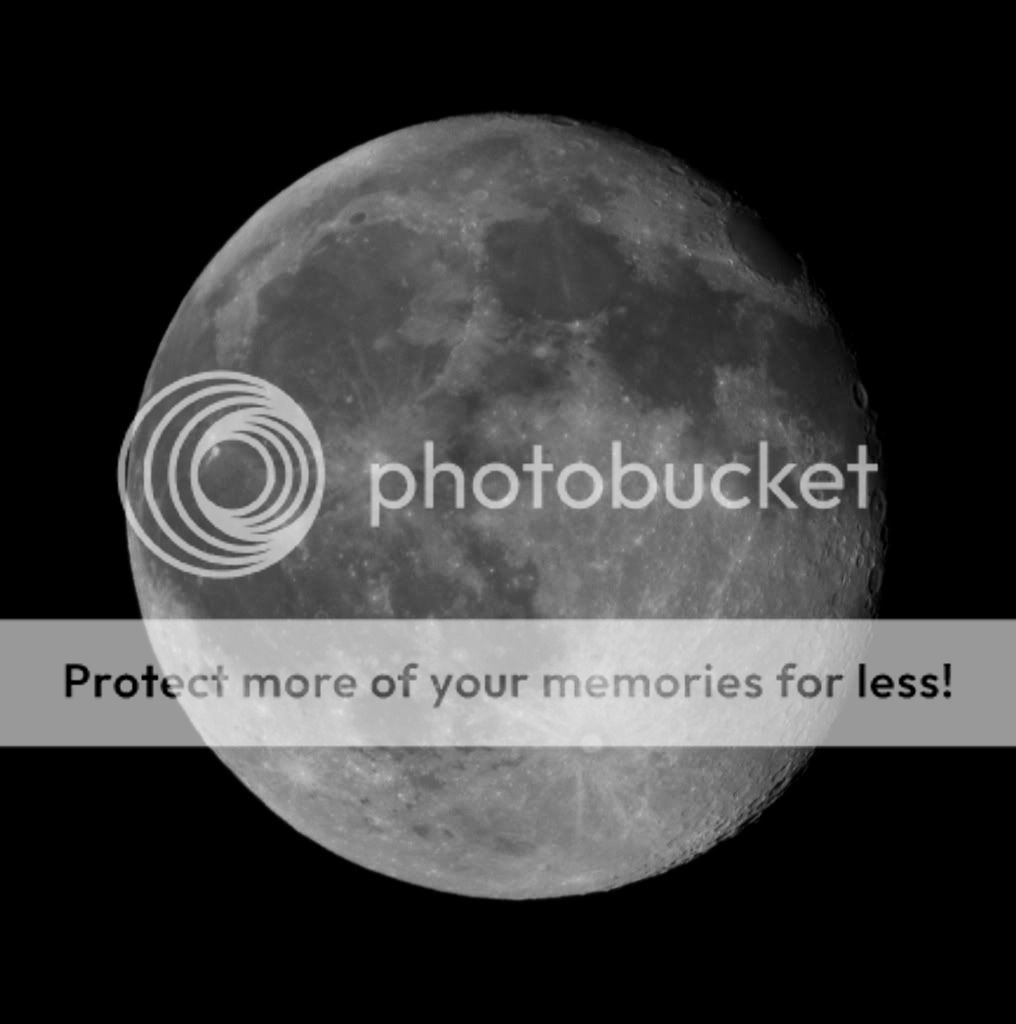
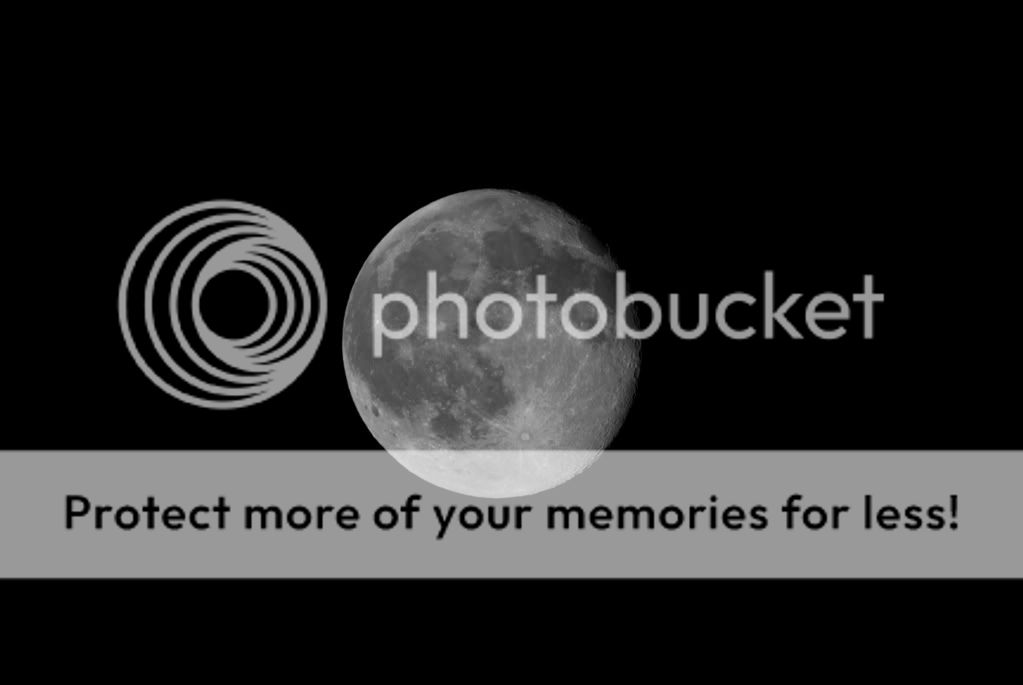

![[No title]](/data/xfmg/thumbnail/38/38721-a6c38c7ae974a8a5518bfbf14be98f18.jpg?1734172597)










